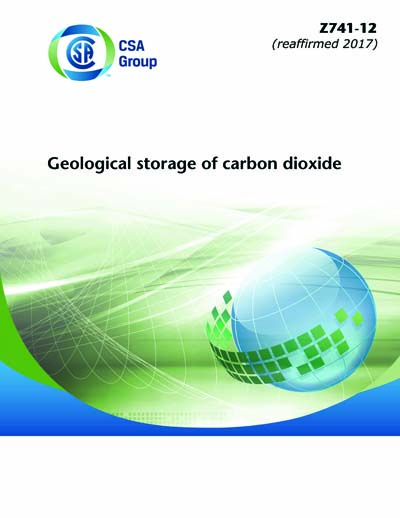Historical
CSA Z741-2012
Z741-12 - Geological storage of carbon dioxide
Preface
This is the first edition of CSA Z741, Geological storage of carbon dioxide. It should be noted that this Standard, by itself, does not have the force of law unless it is officially adopted by a regulatory authority. Since regulatory authorities can adopt the Standard with certain exceptions or additional requirements, it is recommended that the regulatory authority of the relevant jurisdiction be consulted in order to establish the extent to which this Standard has been adopted. Where this Standard conflicts with regulatory requirements, the regulatory requirements will take precedence.Scope
1.1 This Standard- establishes requirements and recommendations for the geological storage of carbon dioxide. The purpose of these requirements is to promote environmentally safe and long-term containment of carbon dioxide in a way that minimizes risks to the environment and human health.
- is primarily applicable to saline aquifers and depleted hydrocarbon reservoirs and does not preclude its application to storage associated with hydrocarbon recovery.
- includes, but is not limited to, the safe design, construction, operation, maintenance, and closure of storage sites.
- provides recommendations for the development of management documents, community engagement, risk assessment, and risk communication.
- This Standard recognizes that site selection and management are unique for each project and that intrinsic engineering risk(s) and uncertainties will be dealt with on a site-specific basis.
- With reference to not precluding storage associated with hydrocarbon recovery, it is explicit that this Standard does not establish requirements or recommendations associated with enhanced hydrocarbon recovery using CO2. While not specifically intended to cover storage associated with enhanced hydrocarbon recovery operations, aspects of this Standard could be used for projects considering the long term storage of CO2 that occurs as an incident of routine enhanced recovery operations.
- the post-closure period;
- CO2 injection and storage in unmineable coal beds, basalt formations, shales, and salt caverns;
- underground storage in materials involving the use of any form of containers; and
- disposal of acid gas.
Content Provider
CSA America, Inc. [csa]







